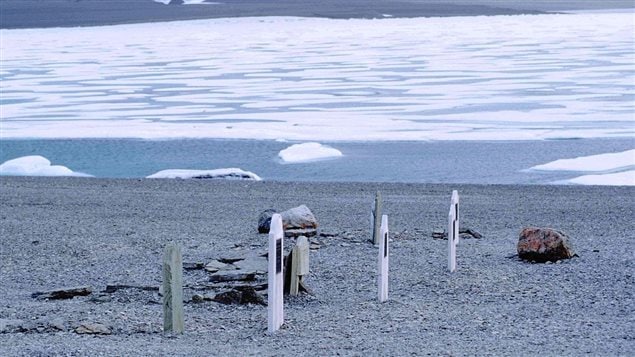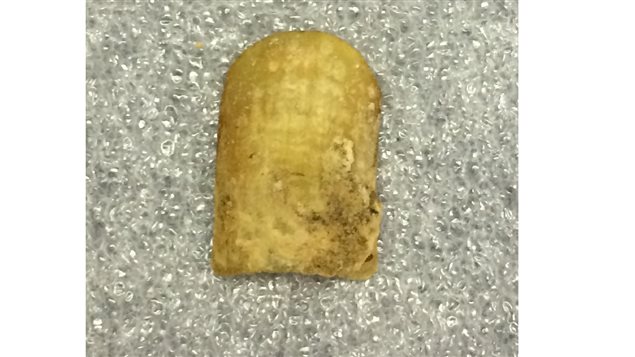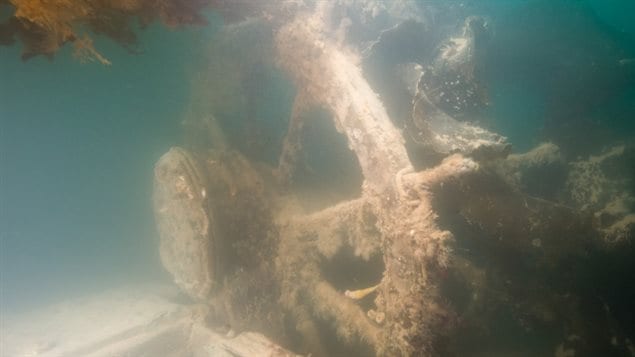Since the mid 1800’s, enduring mystery has surrounded the fate of the Franklin expedition, its two ships and 129-man crew, lost without trace in the Arctic.
Since the 1980’s it was thought lead poisoning from the lead-soldered tinned food had greatly contributed to the health and mental decline of the crew.
Newly released research shows that lead and the tinned food was not a factor, at least not in the way it had been thought.
Jennie Christensen (PhD, RPBio) is the CEO of TrichAnalytics, a hi-tech company involved in environmental and health analysis conditions in tissues. She led the new research
Listen
In the mid 1800’s the process of tinning food to preserve was still relatively new. Lead solder was used to seal the tins. Although the fate of almost all the crew remains a mystery, a rescue mission sent a few years after Franklin failed to return, discovered three frozen buried bodies on Beechey Island in the high Arctic.
A 1980’s autopsy on those bodies found a high level of lead, leading researchers to point to the tinned food and lead poisoning as a significant factor in the mission’s disaster.

Christensen and her team however, used new technology to analyze a thumbnail from John Hartnell, one of those sailors. This involved synchrotron micro-XRF mapping, laser ablation technology, and stable isotope analysis to examine metal exposure and diet throughout the early expedition.
As a result, they came to slightly different conclusions than the previously accepted hypothesis. They found that a high lead level reading was not necessarily due to lead from the tins. Their findings show it was very likely coming from a lifetime of accumulation of lead and the subsequent leaching of that lead from their own bones into their bodies as starvation and illness overtook them. There was also surface lead contamination from their environment such as from dust from the ship’s coal storage which also skewed the earlier findings.
What this new research also found was a distinct lack of zinc in the nail and thus the sailor’s diet.

The team’s research paper was published in the ‘Journal of Archeological Science: Reports’ under the title ‘Hartnell’s time machine: 170-year-old nails reveal severe zinc deficiency played a greater role than lead in the demise of the Franklin Expedition’. (abstract HERE)
As they grow, nails, teeth and hair keep a physical record of the state of minerals and so on in the body over a long period. As Christensen and the team from several universities across Canada examined the thumbnail they found normal (healthy) amounts of lead at the beginning of the voyage, but high levels only as the sailor was nearing death and his body was consuming itself and leaching lead from his bones into the blood. They also found a significant zinc deficiency. A typical source of zinc would be meat and seafood.
It would appear that as the voyage progressed and the ships were frozen in, the sailors diet had almost no meat. Although there should have been enough tinned meat supply, the theory is that due to improper manufacture, the supply was spoiled and they simply ran out of edible food.
For some unknown reason the crew did not seek to fish or hunt marine animals like seal which could have supplied needed nourishment.
Christensen points out that zinc deficiency is important in Vitamin A metabolism and that without zinc and Vitamin A, the immune system is compromised leading to vulnerability of infections such as tuberculosis. Zinc deficiency also leads to behavioural problems which can mimic that of lead poisoning. This may explain some of the bizarre decisions and behaviour by the remaining crew as reported by Inuit.

Research continues in the project which may reveal other important clues into this ongoing mystery which continues to ever so slowly reveal its secrets.
Funding for this research was provided by Stantec and CLS, which is supported by CFI and NSERC. Greenlight supported the funding and development of a method to apply Laser Ablation ICP-MS analysis to determine metals exposure in mammals. University of Victoria researcher Jody Spence used the Laser Ablation tool to analyze metal exposure in the samples. University of Saskatchewan (U of S) scientists Joyce McBeth and Nicole Sylvain used synchrotron micro-XRF mapping at the Canadian Light Source to assess environmental contamination in the nail samples. Hing Man (Laurie) Chan used stable isotope analysis at the University of Ottawa to assess sources of protein in Hartnell’s diet.







For reasons beyond our control, and for an undetermined period of time, our comment section is now closed. However, our social networks remain open to your contributions.